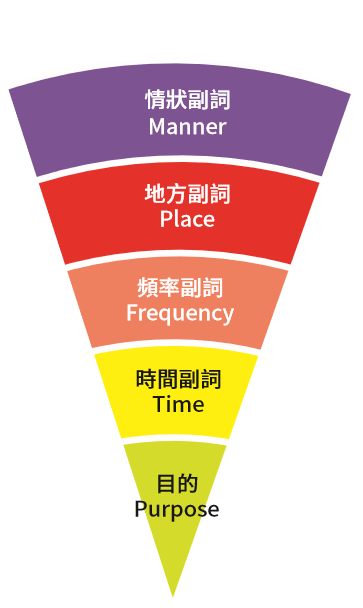副詞的方向性:從主觀到客觀

請試著重新排列這一句話的順序:
為了要追垃圾車,我一周兩天的下班後得飛奔到街上去。
twice a week /I have to run /after work /quickly /in order to catch the garbage truck /down the street
(O ) I have to run quickly down the street twice a week after work in order to catch the garbage truck.
(X) I have to run twice a week quickly after work in order to catch the garbage truck down the street.
情狀副詞 Adverb of Manner
情狀副詞可以讓人看出事情是「如何」發生的,通常結尾是“-ly”。
The kid dances beautifully. 那小孩跳舞跳得很美。
地方副詞 Adverbs of Place
Would you mind if I sit here? 你介意我坐這裡嗎?
頻率副詞 Adverbs of Frequency
My mom never goes to night markets. 我媽媽從不去夜市。
時間副詞 Adverbs of Time
He watched a movie last night. 他昨晚看了部電影。
表「目的」的副詞 Adverbs of Purpose
目的副詞通常都是為了說明「目的」、「結果」、「理由」,它可以是不定詞、 連接詞片語、介系詞片語或是副詞子句,這些同時都具有副詞特性。
He was mad at me because I forgot to bring the money. 他因為我忘了帶錢,在生我的氣。
本文摘錄自一張圖搞懂 正式感Vs.隨意感 2018年4月號
訂閱雜誌
